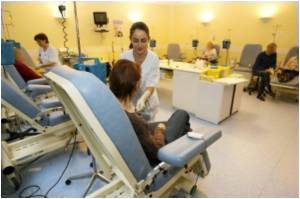
In order to determine how often diagnostic and invasive breast procedures are used for women with DCIS treated with BCS, Larissa Nekhlyudov, M.D., M.P.H., Assistant Professor in the Department of Population Medicine, Harvard Medical School and Harvard Pilgrim Health Care Institute and internist at Harvard Vanguard Medical Associates, and her colleagues at Beth Israel Deaconess Medical Center and Kaiser Permanente California, looked at data gathered from three large health-care systems in Massachusetts and California that studied women treated with breast conserving surgery for DCIS between 1990-2001, with follow-up for up to 10 years. The researchers calculated the percentages and cumulative incidence of diagnostic mammograms and ipsilateral invasive procedures following the initial surgical excision.
The researchers found that over 10 years, 30.8% of women had diagnostic mammograms and that 61.5% had ipsilateral invasive procedures following BCS. "Breast-conserving treatment is a reasonable option for women with DCIS and results in similar long-term mortality outcomes as mastectomy; however, invasive procedures and diagnostic evaluation workup for possible recurrent breast cancer extends over a long period following DCIS excision and treatment," the researchers write, adding that the high rates of diagnostic imaging and invasive procedures may be attributable to concerns about recurrence.
The authors note the limitations of the study, namely that they may have underestimated imaging and invasive procedures in the first 6 months after DCIS excision because women who had mastectomy within 6 months of the index DCIS excision were excluded. Still, they write that, "The fact that women undergoing BCS are likely to have diagnostic and invasive breast procedures in the conserved breast over an extended period of time is important and needs to be included in discussions about treatment options."
In an accompanying editorial, Joann G. Elmore, MD, MPH of the Division of General Internal Medicine, at the Harborview Medical Center at the University Of Washington School Of Medicine and Joshua J. Fenton, MD, MPH, at the University of California, Davis Medical School write that women who undergo BCS may be in for a longer treatment cycle than they had initially expected and that to avoid the uncertainties surrounding DCIS, "we need to learn how to avoid over diagnosis by calling back fewer women for additional testing after screening mammography; we also need better prognostic biomarkers so as to minimize overtreatment of lesions that are unlikely to progress to invasive cancer." Elmore and Fenton add that informed decision making should be a priority for clinicians. "The perspectives of patients and providers on key facts and goals of treatment options can differ; thus, decision aids reflecting all viewpoints are important to help women make decisions that are right for them."
Source-Eurekalert









